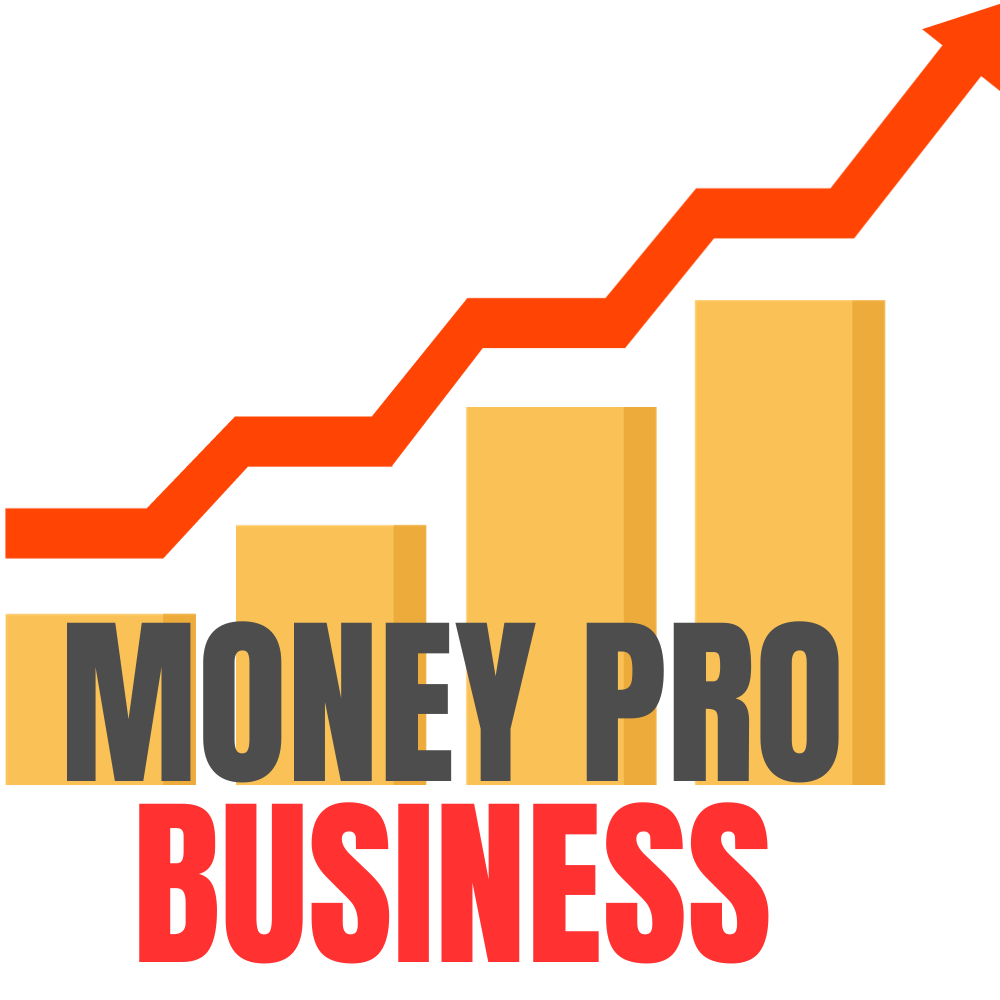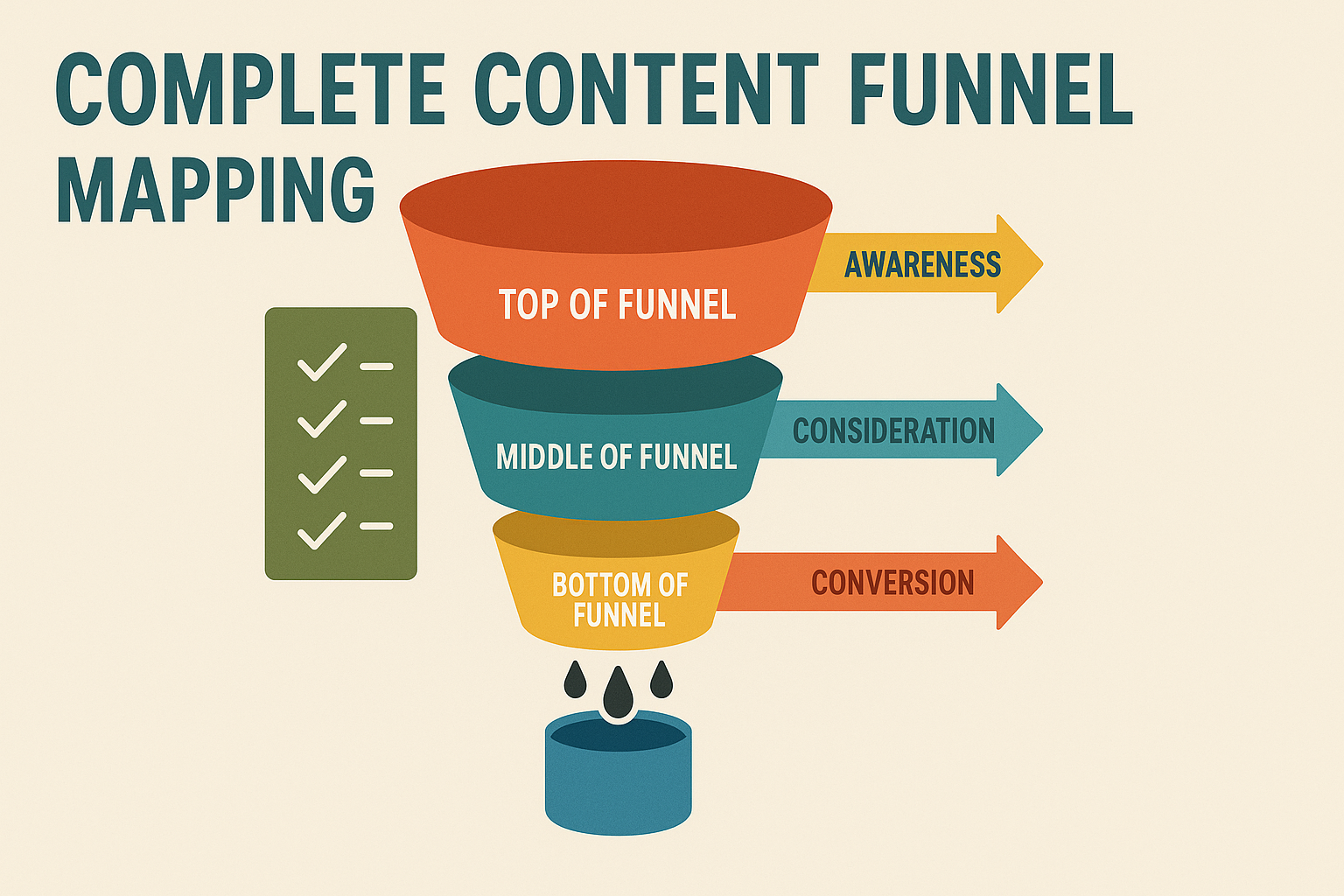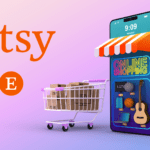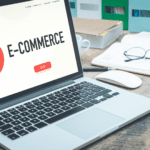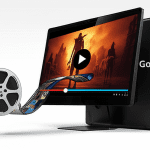Introduction
If you’re a beginner entrepreneur trying to figure out how to turn casual visitors into paying customers, this guide is for you.
This is a step-by-step checklist for building a clear and strategic sales funnel—guiding people from hearing about your business (awareness), to thinking about buying (consideration), to making a purchase (decision).
This guide is written in simple, everyday language so you don’t get lost in marketing jargon.
Let’s define three important stages of a sales funnel:
– TOFU (Top of Funnel): Awareness stage—people are just learning about their problem and discovering your business.
– MOFU (Middle of Funnel): Consideration stage—they know their problem and are exploring options.
– BOFU (Bottom of Funnel): Decision stage—they’re ready to buy and need a reason to choose you.
🎯 Step 1: Map Out Your Sales Funnel
Start with your revenue goal. How much money do you want your business to make this year? Then ask: How many customers do I need to hit that number?
Next, outline the key stages your potential customer will move through (TOFU, MOFU, BOFU). Think of it like dating: they discover you (TOFU), get to know you (MOFU), and decide if you’re the right fit (BOFU).
Set a few key metrics to track progress at each stage:
– TOFU: Website traffic, social media reach.
– MOFU: Email signups, downloads.
– BOFU: Sales calls booked, purchases made.
Finally, define your Ideal Customer Profile (ICP). What kind of people or businesses get the most value from what you offer? Who are you trying to help?
🧠 Step 2: Develop Buyer Personas (Get to Know Your Ideal Customers)
Start by looking at the people already showing interest in your brand. Use any email list, customer data, or even social media interactions.
Talk directly to your past or current customers. Ask them:
– What made you start looking for a solution?
– What options did you consider?
– What almost stopped you from buying?
Check your reviews, support messages, or sales call notes to hear how people talk about their problems. Use their language in your content.
Create 2–5 ‘personas’ (fictional characters) that represent your ideal customers. Include what they think, feel, and need. This makes your content feel like a real conversation.
Map out their goals, fears, frustrations, and daily tasks. Understand what progress they’re trying to make so you can focus on helping them get results.
📢 Step 3: Create Top-of-Funnel (TOFU) Awareness Content
At this stage, people don’t know about your business. They’re just realizing they have a problem.
Make content that grabs their attention and speaks to their pain points—without jumping into a sales pitch.
Use the ‘Teach – Tease – Transfer’ method:
– Teach: Offer quick value or a helpful tip.
– Tease: Suggest a deeper way to solve the issue.
– Transfer: Gently guide them toward a freebie or next step.
Match your content to where your audience is hanging out. Blog posts, short videos, social media carousels, or YouTube are great places to start.
Always include a soft Call-to-Action (CTA) that nudges them toward more content like a free guide, checklist, or quiz.
🤝 Step 4: Build Middle-of-Funnel (MOFU) Trust Content
Now your audience knows you exist. They’re considering whether you can help them.
Offer something valuable in exchange for their email address—like a free guide, template, or assessment that filters in the right kind of people.
Host webinars or live Q&A sessions. These show your expertise and let prospects connect with you in real time.
Set up email sequences that guide people over time:
– Welcome them.
– Teach more about the problem.
– Share client stories.
– Offer the next logical step.
Tackle the most common objections. If people often worry about cost, trust, or effectiveness—create content that answers those worries before they even ask.
💳 Step 5: Optimize Bottom-of-Funnel (BOFU) Conversion Content
These prospects are close to buying. Help them take the leap with content that builds confidence.
Your landing pages should be clear and simple:
– A strong headline.
– Emotional benefits.
– A few bullet points.
– One CTA (no distractions).
Use proof: Add testimonials, screenshots, video demos, or mini case studies.
Offer ways to lower their risk:
– Free trials.
– Money-back guarantees.
– Low-cost pilots or demo calls.
Make the transition to your sales team (or next step) smooth. Know what content they’ve seen so far, and keep your message consistent.
🚀 Step 6: Plan a Smart Content Distribution Strategy
Creating great content is only half the job—you’ve got to make sure people see it.
Add your buyer persona info to every content idea so you know exactly who you’re writing for.
At each funnel stage, people will have different concerns. Plan your content to address those at the right time.
Match channels to where your audience is:
– TOFU: Instagram, TikTok, YouTube, blogs.
– MOFU: Email, guides, live sessions.
– BOFU: Sales pages, testimonials, retargeting ads.
Have a 48-hour plan after you publish something new. Share it on email, social media, and anywhere else your people hang out.
Use tracking links (UTMs) to see what’s working. This way, you know which channel brings the most traffic or leads.
📈 Step 7: Measure and Improve Your Sales Funnel Over Time
Review your personas every 3 months. People change, and so should your messaging.
Build a dashboard that shows early signals (like email signups) and real results (like sales).
Use the ICE Method to fix funnel leaks:
– Impact: How big of a difference will it make?
– Confidence: How sure are you that it’ll help?
– Ease: How simple is it to do?
Make a 90-day improvement plan:
– Choose one weak stage to focus on.
– Set clear goals.
– Run small experiments.
– Celebrate wins and adjust as needed.
For more tips on turning leads into loyal customers, check out ways to engage more customers.

